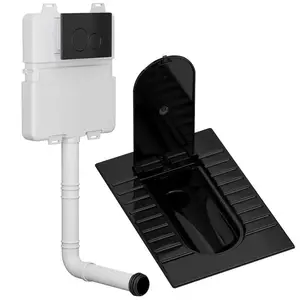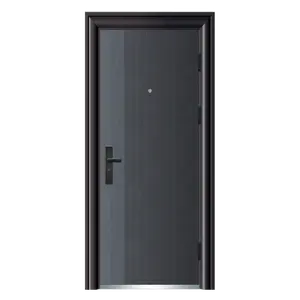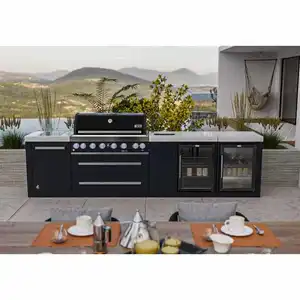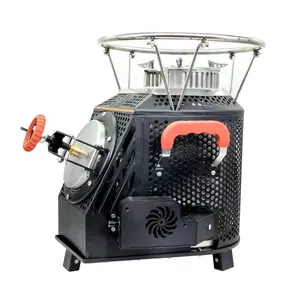Popular in your industry







































































Related Searches:



















































































































































Top categories
About container restaurant design
The culinary landscape is undergoing a transformative shift with the advent of modular dining, a concept that is reshaping the essence of restaurant design and customer experience. At the heart of this revolution are container restaurants, innovative structures that are rapidly becoming the cornerstone of sustainable and flexible dining solutions. This article delves into the burgeoning world of modular dining, exploring how prefabricated modules are not only expediting the launch of new eateries but also redefining the parameters of design, sustainability, and customer engagement in the food service industry.
The Rise of Modular Dining
The concept of modular dining is gaining traction as industry leaders recognize its potential. Modular buildings, constructed off-site and assembled on location, offer a significant reduction in development time. This speed-to-market is a key advantage, particularly when traditional construction faces delays. The modular approach not only accelerates the opening of new locations but also presents cost efficiencies. Labor overhead is minimized, and controlled food costs contribute to favorable unit economics.
Moreover, the environmental impact of modular construction is often lower than that of traditional builds, adding to its appeal. The adaptability of modular units is also a highlight; they can be placed in various locations, including undeveloped land or alongside existing retail spaces, offering flexibility in real estate selection. As the industry continues to face unpredictable challenges, the shift towards modular dining formats is becoming more pronounced, with entities across the spectrum from fast food to specialty cafes exploring the benefits of container-based structures.
Consumer experience in these modular settings is reported to be positive, with some noticing quicker service due to the efficient layout. The trend is not just a fleeting one; established entities and new entrants alike are investing in modular formats, indicating a strong belief in the model's future. This movement towards modular solutions reflects a broader industry shift towards innovation, efficiency, and sustainability.
Understanding Container Restaurants
Alibaba Group has pioneered the creation of eco-friendly, turnkey, and customizable spaces crafted from modified, recycled shipping containers. These versatile structures are designed to serve as restaurants, bars, event, and retail spaces, offering a sustainable and innovative solution for modern dining and business needs.
The company has also ventured into developing container franchises, Food Parks, Food Halls, and Warehouse Conversions, showcasing the flexibility and potential of container-based construction in the food service industry.
Drawing on extensive experience in constructing and operating successful food service ventures, Alibaba Group delivers container restaurants that are not only mobile but can also be established as permanent fixtures. These units are tailored to provide a unique and secure way to reach customers, emphasizing sustainability and convenience.
The adaptability of these containers allows for a range of applications, from hosting memorable events to launching the ideal beverage concept, demonstrating the practicality and innovative approach of container-based dining solutions.
Types of Container Restaurants on Alibaba.com

Container restaurants have emerged as a versatile and sustainable option in the modular dining sector. Alibaba.com showcases a variety of container restaurants, each offering unique design elements and functionalities. Among the offerings, there are expandable container houses that can be transformed into luxury villas, complete with multiple bedrooms, exemplifying the adaptability of container architecture. These units can be folded or expanded, providing flexibility for various dining space requirements.
Further exploring the types available, one can find mobile prefabricated homes that serve as quaint granny flats or as sophisticated portable living spaces with a modern aesthetic. These structures are designed to be easily transportable, ensuring that restaurant owners can set up their dining establishments in diverse locations. Additionally, there are specialized shipping containers with roller shutter doors, tailored for customization and security.
For those interested in eco-friendly options, there are biodegradable food containers suitable for takeaways, highlighting the industry's shift towards sustainability. On the more luxurious end, custom prefab modular houses with fully equipped kitchens are available, reflecting the high-end potential of container restaurants. These units can range from compact 10ft pop-up bars to expansive 40ft structures, offering a breadth of choice for various business needs and customer experiences.
Lastly, the collection includes portable bars and coffee shops, some of which boast solar power capabilities, merging eco-consciousness with modern design. These container restaurants are not just limited to stationary dining experiences but can also be found in mobile versions, such as commercial container load bars and beach bar designs, providing entrepreneurs with the ability to operate in urban streets or scenic beachfronts.
Design Innovations in Modular Dining
Modular design, a concept gaining traction in interior design, emphasizes flexible, customizable spaces through the use of modular elements. This approach is particularly relevant to the realm of modular dining, such as container restaurants, where adaptability and personalization are key. Modular units in these settings offer a sleek, stylish, and innovative appeal, enhancing visual interest while prioritizing functionality. The adaptability of modular furniture, like sofas with multiple modules that can be reconfigured, mirrors the versatility required in container restaurant design. Similarly, the use of neutral yet impactful pieces like rugs and lighting fixtures can translate into the dining experience, providing a minimalistic yet conceptual aesthetic that fits various styles. The focus on materials such as botanic silk for rugs and aged brass for lighting fixtures also reflects the importance of material selection in creating durable and aesthetically pleasing dining spaces. These elements of modular design can inspire the layout and ambiance of modern container restaurants, aiming for a distinctive and modern character in the dining environment.
Material Selection for Durability and Aesthetics
When selecting materials for container restaurants, sustainability and durability are paramount. Aluminum, known for its recyclability, emerges as a suitable choice. It can be easily rinsed and recycled, aligning with green practices while offering a sturdy structure for modular dining spaces. Additionally, the use of biodegradable materials like bamboo or sugarcane-based moulded pulp packaging presents an eco-friendly alternative. These materials are not only sustainable but also add an aesthetic value to the container design, enhancing the overall dining experience.
Innovative materials such as bio-plastics, derived from renewable resources like plant fats, oils, or agricultural waste, offer an environmentally responsible option for container construction. These materials are designed to reduce the environmental footprint and can be integrated into the design of modern container restaurants, contributing to both the durability and aesthetic appeal of the dining space. The use of mushroom packaging, utilizing agricultural byproducts and mycelium, provides a unique, organic look and demonstrates a commitment to sustainability that can attract eco-conscious customers.
Features of Modern Container Restaurants

Modern container restaurants are a testament to innovation in the food service industry, offering a blend of functionality and style. These establishments often feature a minimalist design, utilizing the compact space of shipping containers to create unique dining experiences. For instance, a seafood bar by the beach capitalizes on the container's portability, allowing for a restaurant with a view and minimal kitchen requirements. The build-your-own pizza concept takes advantage of the container's open layout, providing an interactive dining experience where families can engage in the meal preparation process.
Sustainability is another key feature, with plant-based fare being served in eco-friendly, repurposed containers, emphasizing the commitment to environmental responsibility. The concept of a food hall boxyard demonstrates the versatility of container restaurants, where multiple vendors can operate in a communal space, encouraging social interaction and offering a variety of cuisines. Moreover, the adaptability of these structures is showcased in the ability to expand, creating multi-level designs that can attract attention and provide additional dining space.
Container restaurants can also cater to niche markets, such as a craft beer garden that combines the enjoyment of specialty brews with a convivial outdoor setting, or a greenhouse coffee shop that doubles as a community space, enhancing the ambiance with a touch of greenery. These features highlight the modern container restaurant's ability to adapt to various dining concepts, providing entrepreneurs with a canvas to craft their unique vision for a dining establishment.
Advantages of Investing in Container Dining Spaces
Investing in shipping container kitchens presents several advantages for businesses and individuals alike. These modular dining spaces are cost-effective, often requiring a lower initial investment compared to traditional brick-and-mortar structures. The construction process is also typically faster, which can save on labor costs and reduce downtime.
The portability of container kitchens is a significant benefit, allowing for relocation and the ability to reach new customers or cater to events in various locations. This flexibility is particularly advantageous for pop-up restaurants, food trucks, and catering services.
Durability is another key advantage, as shipping containers are built to withstand harsh weather conditions and provide security against pests and theft. Their robust construction ensures longevity, with a new container potentially lasting up to 25 years with minimal maintenance.
Customization is a standout feature of container kitchens, enabling owners to tailor the interior and exterior to their specific needs. This allows for a personalized approach to kitchen design, accommodating different types of cooking, space requirements, and aesthetic preferences. The ability to add branding and unique decor further enhances the appeal of container restaurants.
These advantages make shipping container kitchens a compelling choice for a range of applications, from temporary setups during renovations to permanent fixtures for innovative dining experiences.
Application Scenarios for Modular Dining Solutions
Modular dining halls offer versatile solutions for various organizations and businesses seeking to establish or expand their dining facilities. These prefabricated structures are well-suited to meet the needs of educational institutions, government entities, religious organizations, and commercial enterprises. For schools, they provide a quick way to set up cafeterias, especially during periods of construction or renovation. Government agencies can benefit from their ease of deployment in remote locations or for temporary setups. Churches and other religious institutions find modular dining halls useful for community events and gatherings, ensuring they have the capacity to host large groups. Businesses, including those in remote areas like mining projects, can utilize these modular units to create comfortable and functional dining spaces for their workforce. The adaptability of these dining halls also extends to their use in outdoor events, where temporary, yet robust dining facilities are required. The ability to customize these structures to include various amenities, such as storage, offices, and bathrooms, further enhances their application across different scenarios.
Conclusion

In conclusion, the world of modular dining, with its container restaurants and innovative design solutions, represents a significant leap forward in the food service industry. These establishments are not just a response to the demand for speed and efficiency but also a testament to the industry's commitment to sustainability and adaptability. From the rapid deployment of modular outlets to the eco-friendly designs of Alibaba's offerings, modular dining is proving to be a game-changer. Alibaba.com's diverse offerings, including expandable container houses and mobile bars with solar power, highlight the versatility and potential of these structures. The integration of modular design elements and the careful selection of durable materials underscore the balance between aesthetics and functionality. With the added benefits of cost-effectiveness, portability, and customization, investing in container dining spaces is an attractive proposition for entrepreneurs. As we observe the application of these modular solutions across various scenarios, from educational institutions to remote business enterprises, it is clear that the future of dining lies in innovation, flexibility, and a deep-rooted sense of environmental responsibility.














































